Mamata Pandya
The year was 1911. A young man set up practice as a District Pleader in Vadhwan Camp, in the erstwhile princely state of Bhavnagar in Saurashtra. His practice was doing well, but his heart was not in the machinations of legal matters.
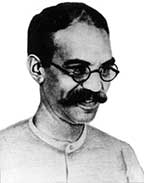
In 1913, he became a father to a son. The advent of the child, Narendra, triggered the life mission which would launch him into a new role. The man was Gijubhai Badheka, whose mission was to bring about a revolution in the field of child development and education.
Indian education during that time was a curious mixture of the Macaulayism as practised by the English rulers and the traditional “spare the rod and spoil the child” tenet. Narendra’s parents saw the sorry state of the local schools and were apprehensive about the kind of education their son would get. Gijubhai yearned for something different for his child, but was not able to visualize what this could be. So he started reading whatever he could find about education and educators. He also started sharing his anxiety and dilemmas with his friends.
One of these friends was Darbarshri Gopaldas Desai. He told Gijubhai, “If you want to read literature about children’s education and see a new kind of school, go to Vaso and meet Motibhai Amin.” This opened a window that the young lawyer was seeking. Gijubhai went to Vaso, met Motibhai and saw his school. He came back with many books, among which was a book (Montessori Mother) describing the Montessori method of education. This was Gijubhai’s introduction to the thinking of Maria Montessori and her writing.
The more he read, the more deeply he started thinking about children and child development and about putting the theory to practice. He started experimenting with young Narendra and sharing his observations with his friends, as also the ideas of Montessori. As his desire to spend more time and energy into this new challenge grew, the further he drifted from his legal practice.
That is where serendipity stepped in. In 1915, Gijubhai, already frustrated with the legal profession and deeply engaged with the dilemmas of educational systems, was invited to help frame the constitution of a new educational institution in Bhavnagar. The young lawyer did not need a second bidding.
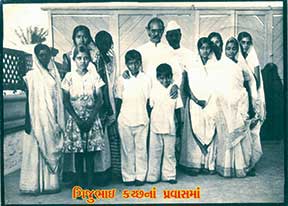
The founders of Dakshinamurti, as the institution was called, were kindred spirits, all grappling with dilemmas about education, as well as reading the works of Montessori. This was the turning point for Gijubhai. At the age of 32, he quit his legal practice and joined Dakshinamurti in 1916, initially as Assistant Warden of the student’s hostel and then as a teacher in the high school.
What did he bring to his new vocation? The scientific perspective of an experimenter, the desire to do something new, the insight to draw out some light from the doldrums that the educational system was in, revelations from the writing of Madame Montessori, passion and faith.
His direct interactions with students reinforced his conviction that if real change had to happen it was critical to start from early childhood. He put forth a proposal to the Board to start an experimental pre-school (Balmandir). His proposal was accepted with the proviso that Gijubhai should run the school. A building was identified and materials were purchased for the new venture. Announcements were made and admissions were opened. Eight days after the decision was taken, the Dakshinamurti Balmandir opened its doors on 1 August 1920.
But the curriculum was yet to be prepared. This was the challenging part. Gijubhai wrote about this later:
Looking at that curriculum today there is a sense of joy. At that time there was not much clarity on which educational principles a pre-primary school should be run. In those early days the objective was to blend the methods of kindergarten, partnership, etc, and start the best possible Balshala. I had faith in the Montessori method, and others knew that in the future this would be the guiding principle. But at the time there was not enough literature available, so to think of calling the school a Montessori school or to develop a curriculum based entirely on this would not have been acceptable. Also while I believed in the theory and principles, I had yet to apply them in practice. I was not sure what the outcomes would be. Would our children be able to use the equipment? Would a system which originated abroad suit our conditions? There was a lot that I was learning myself, and my experience was still nascent. I understood my responsibility. But I was, and remain, an experimenter at heart. While I was keen to start experiments with the Montessori method, I did not want to be tied to a single approach or method. Thus the initial curriculum was based on a mix of methods and approaches. I was determined to be as objective as possible and not assume any one method to be the “one and only”.
And that is why the curriculum was a diverse mix of methods and approaches; that is why all kinds of toys were bought. That is also why I could experiment so freely and learn for myself that indeed, the Montessori method could be made to work. The Montessori method has not tied me down, rather it has inspired me to explore new areas of child development and revealed to me new truths.
Dakshinamurti became Gijubhai’s karmabhoomi. Gijubhai embarked on a systematic and sustained programme of experimenting with new approaches and methods to engage children in learning; but there was much more that was intended, and was gradually starting to happen. The child-centric philosophy looked at every aspect of child psychology and all-round development.
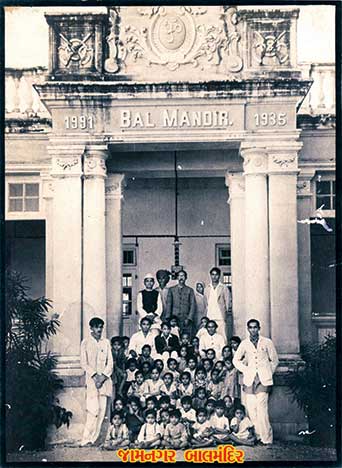
Parents
As the children began to blossom in an environment of compassion, understanding and freedom, this was restricted to the few hours that they were in the Balmandir. They still went home to parents who believed in scolding and punishment; or were indifferent to them. In some cases the parents were suspicious, or even vocally unhappy, with the new kind of education.
Gijubhai knew that as long as this dichotomy existed, his efforts would be incomplete and the children would be the ones most affected. Unless the same principles of child development were applied both at home as well as at the Balmandir, the school would not succeed. He realized that it would have to be the work of the teacher to get parents interested and involved in their children’s development and education. Gijubhai himself began to interact with the parents.
In his words: A child can grow only in an environment where both parents share a similar point of view. I needed the help of both parents, and I did get that. I used to get my talks printed and would give these to parents.
Gijubhai was not satisfied with lectures and leaflets for the parents. He felt that this would not make a substantial difference until teachers went to the homes of students and saw their home environment, and had personal talks with the parents to discuss specific problems. He always felt that he could not give enough time for this, given his full-time preoccupation with the Balmandir; but he tried as and when he could.
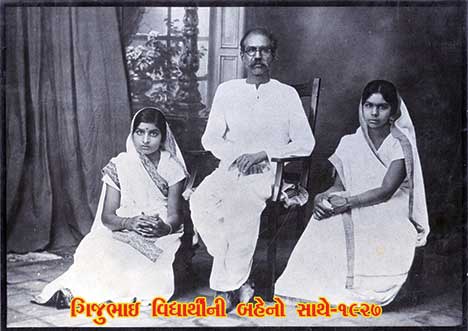
Gijubhai’s observations of children and their responses to situations, his own experiments at home and in the Balmandir, and his dialogues with parents were all meticulously recorded and analyzed. These were compiled and published as books specifically for parents. They are written in an unusual style – anecdotes of everyday activities at home, and common responses and reactions to these, from parents as well as from children. Without being moralistic or preaching, they offer alternate responses and suggestions for handling situations. Even the titles are refreshing as well as comforting: Maa Baap Thavu Aakru Chhe (It is not Easy Being Parents); Aa Te Shee Maathaphod (What a Headache This Is), Maa Baap Ne (To Parents).
They remain to this day valuable sources of insights into child behaviour, guidelines for child upbringing, and much food for thought.
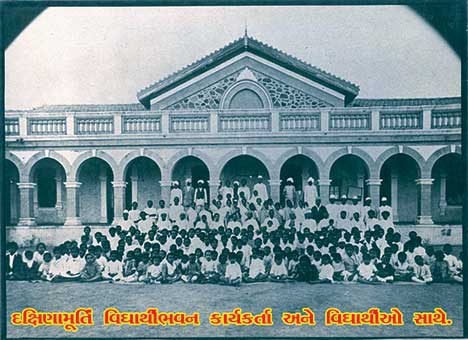
Teachers
As he experimented with new approaches and methods, Gijubhai realized that his experiments with children would be effective only if all teachers applied the same in their dealings with children; and so he also began writing about these for teachers. He also realized that if the new approach to education was not to remain confined to Dakshinamurti, there was the need to create a cadre of trained teachers who could support and strengthen this kind of teaching and learning everywhere. In order to formalize this through a systematic curriculum and methodology he proposed the setting up of a teacher training centre.
Thus in 1925, the Adhyapan Mandir, as it was called, was started with Gijubhai as the head and Taraben Modak as the deputy head, as well as hostel warden. The teacher training curriculum was based on the principles of child education which promoted all-round development and life skills. It did not involve only listening to lectures, taking notes and observation, but equally direct and experiential learning. Music and art had a prominent role in the syllabus. The training was not confined to the formal classes, all duties and tasks in the hostel were also shared by the trainees – from cleaning to cooking, to administrative and management responsibilities. Gijubhai felt that this was essential as these trainees would in future be setting up and running their own Balmandirs.
The trainees learnt much more from observing Gijubhai’s actions and behaviour than from his lectures. They were not simply enlightened by the theories of education, but continually inspired and motivated by the daily life and living of their teachers. From morning till night there was a constant hum of activity in the Balmandir and Adhyapan Mandir.
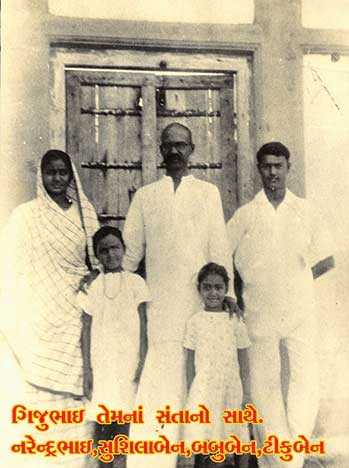
Children
Gijubhai’s search for a better alternative to the educational system of the day also included an exploration of suitable literature for children. Around 1920-21 there was little literature in Gujarati that was written especially for children. What was available at the time was either moralistic, or trite, and told in a superficial ‘childish’ language and style. This was the case in most Indian languages.
Gijubhai felt that language enrichment was an integral part of a child’s all-rounded development. He started writing for children with this in mind and created a rich ouevre of children’s literature in Gujarati. Gijubhai was not just a storyteller, he was the creator of a new genre of children’s literature and his contribution to the field has been immense and invaluable. His stories for children Gijubhaini Balvarta continue to be well-loved over several generations.
Gijubhai was blessed with the gift of words. But he was more than a raconteur. He wrote with the eye of an educator; every book, every lesson, every paragraph and every word was closely weighed on the scale of pedagogy before it was published. The messages were not always evident, but were innately woven into the fabric of the words and sentences, in prose and poems and proverbs, folk songs and rhymes. Gijubhai’s writing for children encompasses an incredible diversity of subjects: mythology, science, nature, geography, history, people, and events. These are narrated as historical tales, folk tales, plays, travelogues and letters, humorous essays, and straightforward lessons.
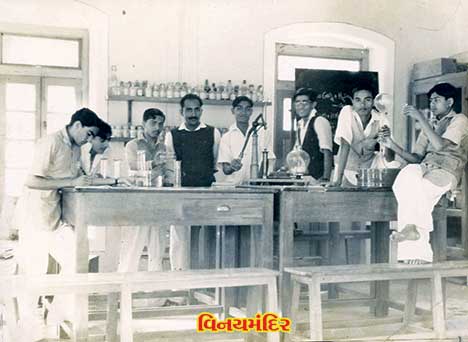
Gijubhai’s experiments, observations, and vision for a different kind of education culminated in the book titled Divaswapna (Daydream). Even today, Gijubhai’s name is almost synonymous with this book. This may be because it is his only book that has been published in English and many Indian languages. The rich and large volume of his other writing for educators, parents and children has not been widely accessible.
A recent website www.gijubhaibadheka.in is an attempt to compile and present the greater depth and breadth of Gijubhai’s contribution to education. The website includes, for the first time, English translations of some of his writings, as well as in some other languages, in addition to the original works in Gujarati.
The author is the granddaughter of Gijubhai Badheka and co-creator of the website. She worked with the Centre for Environment Education in Ahmedabad where she was engaged in instructional design for educators and children, and teacher training. She is now an independent consultant, editor, writer, translator, storyteller and blogger. She can be reached at mamata.pandya@gmail.com.
